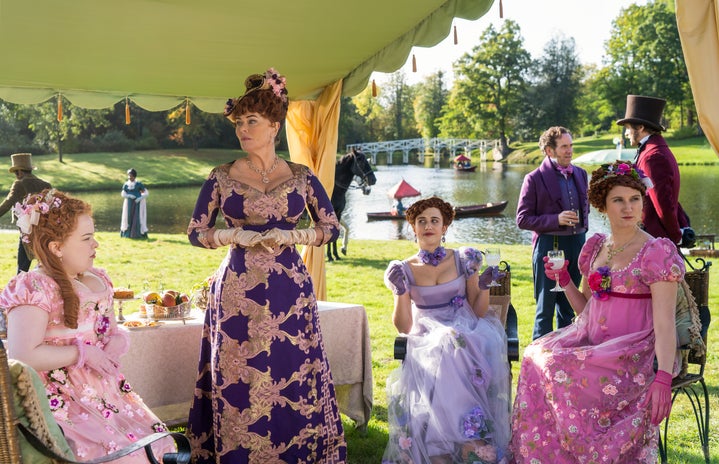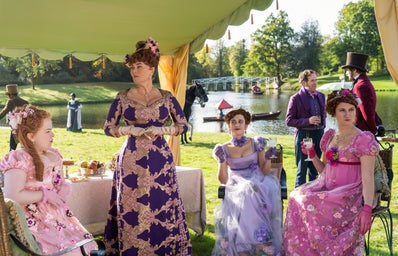The show Bridgerton, inspired by the novel series by Julia Quinn, tells the story of the Bridgerton family seeking love and marriage during the Regency Era. The first season started on December 25, 2020. Now Netflix has just released its third season and, as expected, it’s been nothing but a success among fans of the show.
Since its beginning, viewers have made videos and posts online, romanticizing the period of time where the show is set, the Regency Era. But was it really all that perfect?
What was the Regency Era?
The time period between 1811 to 1820 in Great Britain is called the Regency Era. King George III was sick through those years, leaving his son, George IV, in charge of the kingdom as prince regent, that is where this era’s name comes from.
Bridgerton does try to be as authentic as possible by mixing historical events with modern aspects in its storytelling, as its creator said to Entertainment Weekly, “If somebody was going to do a period piece, they wanted to do another adaptation of Jane Austen or one of the Bronte sisters. Those are all wonderful, but the historical romance novels that are being written today are a little bit different. And there’s a huge market for them. I don’t think it’s at all surprising that the person who would realize that would be [the show’s executive producer] Shonda Rhimes”.
Were there really marriage marts in this period?
As we can see in Bridgerton, marriage is an important event in the English high society of the 1800s. In the show, we watch as the ladies are introduced to society, hoping that some lord or duke may want to marry them, of course, with the Queen’s approval first.
But have you ever wondered if the whole thing really happened like this? Was the Queen really involved in her subjects’ marriages? Well, the series definitely loves to dramatize some aspects of history.
For starters, since the first season, something that has a great relevance is who will be the “diamond of the season”, which is the lady that will stand out in the Queen’s eyes. However, according to Hannah Greig, historical advisor to the show, this term was never actually used. What could happen eventually would be some women being marked by the press as great beauties.
As for the debutante balls, they date back to the reign of Elizabeth I (1558–1603), and the show did a great job recreating them, with the rules and social manners from the Regency period.
How were the debutante balls?
The debutante balls lasted nearly 180 years, but they came to an end in 1958, during Queen Elizabeth II’s reign. This tradition would start with young women from England’s high society making their formal debut in society, presenting themselves in front of the monarchy. Then, the debutantes would participate in a series of elite events, and would hopefully get engaged by the end of their single season. In the 20th century, most girls would be a part of at least two seasons.
The young women had a lot of preparation to do before starting their season. Fiona MacCarthy, a British biographer who was a debutante, said in her book that they spent months learning other languages and how to dance perfectly, and of course, training their curtsy.
She also highlights the importance of the wardrobe, “a minimum of six dance dresses, of which one must be white for the Queen Charlotte’s Ball in May. Two or three of the dresses needed to be long and relatively formal, for the grander balls in London; the others could be short, for dances in the country. Debs also needed several day dresses in silk or chiffon, suitable for Ascot, Henley, the Fourth of June at Eton. Further necessities were shoes and gloves and handbags and especially hats…”.
Was this tradition exclusive to England?
With Bridgerton’s season two, a lot of people may have wondered if people from outside of England could be debutantes. The answer is yes, they could, as long as they were a part of the English Empire.
This could happen in two different ways, the girls could either present themselves to the Viceroy, Governor, or, after the Dominions achieved self-government, the Governor General, or they could travel to London. The reason why not all of them participated in the whole season is that they would only show up at court, for the monarchy, and then go back home.
21st century debutantes
As a result, debutante balls were popularized all over the world, having their own little variations and even developing new traditions. In the USA, for instance, in order to make these events less restricted, cities and communities started organizing their own balls, and in the 1920s, they entered the educational space with high school proms that exist to this day.
In the UK, when Queen Elizabeth II ascended to the throne, her attempt to modernize the crown and make more accessible events made her put an end to the balls, with the last presentations at court in 1958 and the final Queen Charlotte’s Ball in 1976. However, just like in the USA, there are still events organized by the society on its own and The London Season still exists, only without the Queen or King’s participation.
The debutante tradition went so far as to reach South America. In Brazil, during the 50s and 60s, big balls were organized, with valses, pretty gowns and members of the elite. With the passing of time, a lot of changes were made until they finally became what they are today, big parties thrown when girls turn 15, also called debutante parties.
———————————————————————————————————
This article was edited by Isadora Mangueira.
Liked this type of content? Check Her Campus Cásper Líbero for more!


